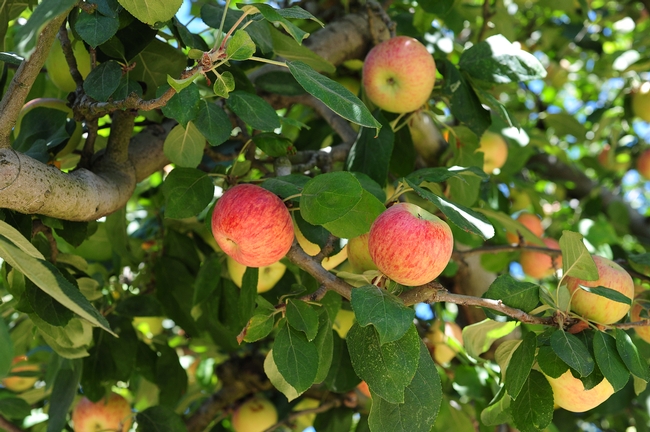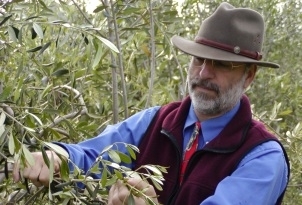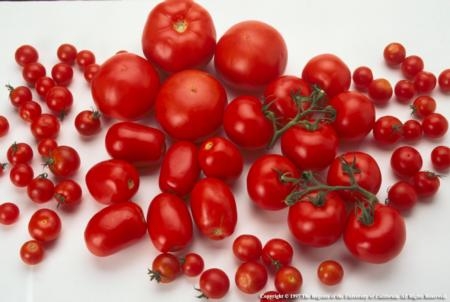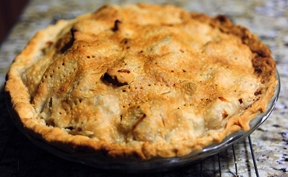Posts Tagged: Paul Vossen
California enjoying a respite from the drought
Rain over the last few days in California, which some are describing as falling in "biblical" proportions, will bring welcome relief from the historic drought, if not mark its end, reported the Olive Oil Times.
"The storm will partially replenish water supplies, but there is still a long way to go," commented Dan Flynn of the UC Davis Olive Center.
The lack of rainfall the last few years has left many olive farms with low soil moisture, stressing the trees, said Paul Vossen, UC Cooperative Extension farm advisor in Sonoma and Marin counties.
"Part of that stress influenced the crop load, which was lower than normal, and it also advanced the ripening of fruit," Vossen said. "This autumn harvest was at least two to three weeks early and was finished by Thanksgiving."
The story said the California drought cut U.S. olive oil production by 25 percent.
“The rainfall we are receiving right now is welcome for refilling the soil profiles, so that the olive trees can start off next spring with good growth,” Vossen said. “It is also a relief to see enough rain to start to see a replenishment of our reservoirs, so that irrigation water will once again be plentiful for next summer's needs. Even though we may get some temporary flooding, all in all, this rainfall is a welcome thing.”
Dryland farming yields small amounts of very flavorful produce
Bland spoke to a number of experts who believe withholding irrigation produces a superior product.
"Once you taste a dry-farmed tomato, you'll never want anything else," said Jen Lynne of Happy Boy Farms.
"Dense and really flavorful" locally grown dry-farmed potatoes are available at Whole Foods Market in Sebastopol, said produce buyer Allan Timpe.
Paul Vossen, University of California Cooperative Extension adviser in Sonoma County, says many people who dry farm do so only because they have no water with which to irrigate their land.
"They do it because they have to, and so they'll make it part of their marketing strategy," he says.
Olive oil ‘fridge test’ doesn’t reliably detect fraud
One notion — the so-called “fridge-test” theory — says you can determine the purity of your extra virgin olive oil (EVOO) by putting it in your refrigerator. If it solidifies, you can trust your EVOO is pure — or so the theory goes.
Is that scientifically accurate?
No, according to new research from the UC Davis Olive Center. Testing seven samples under cold conditions over eight days, researchers discovered the fridge test is unreliable in detecting either the purity or quality of olive oil.
“None of our samples showed any signs of congealing after 60 hours in a laboratory refrigerator set to 40.5 degrees Fahrenheit,” said Dan Flynn, executive director of the UC Davis Olive Center. “Even after 180 hours, the samples never fully solidified.”
“Wouldn’t it be nice to have such a simple test that could indicate an olive oil’s market grade, but it is much more complicated than that,” said Paul Vossen, UC Cooperative Extension advisor in Sonoma and Marin counties.
“All olive oils contain a small amount of saturated fatty acids that solidify at refrigerator temperatures,” said Vossen, an olive oil expert. “The amount of solidification is equal to the amount of saturated fatty acids in the oil, which depends mostly on the varieties of olives used to make the oil and to a lesser extent where the olives were grown. Solidification does not indicate freshness, purity, flavor, extra virgin grade, or any other quality parameter.”
The fridge-test theory surfaced on a recent episode of The Dr. Oz Show which aired Feb. 11, 2013, to more than 3 million viewers. While cautioning his method isn’t fool-proof, Dr. Oz. encouraged viewers to test the purity of EVOO by seeing if it solidifies in the fridge.
“After the show aired, we were swamped with calls from people who were concerned they were being ripped off,” Flynn said.
So the Olive Center conducted a study. They refrigerated seven samples, including two EVOOs, an olive oil, a canola oil, a safflower oil, and two blends. Some samples showed minor congealing at the bottom of the bottles, but none solidified completely.
“It’s true that waxes and long-chain fatty acids in extra virgin olive oil can lead to the oil solidifying in the cold, although relative amounts of these compounds vary from oil to oil,” the study said.
Olive oils are graded based on how the oil is extracted from olives and on chemical and sensory standards. True extra virgin olive oil is extracted from olives without heat or chemicals and must have no defective flavors such as rancidity. Extra virgin olive oil is more expensive than other oils and is therefore an attractive product for fraud.
Using sensory and chemistry testing, the UC Davis Olive Center is working on dependable methods for detecting when an extra virgin olive oil is fraudulently labeled. In the meantime, the center advises consumers to choose an oil within 15 months of the harvest day (not the best-before date), look for a certification seal indicating that the oil passed chemical and sensory tests, and seek (and store) oils protected from light.
Cherish the Gravenstein
If an apple a day keeps the doctor away, what does a Gravenstein apple pie do?
It causes a stampede to the dining room table, that's what it does. Expect to see chairs overturning, plates flying and forks spinning.
That's because Gravensteins make the best pies. As any apple pie aficionado will tell you: the best pies are the "G" pies: Gravenstein (first) and Granny Smith (second).
The Gravenstein apple reigned as the preferred apple on our family farm in western Washington. We found the sweet-tart apple "perfect" for eating right off the tree, or made into pies, applesauce and apple cider. The cows liked them, too. A gentle nudge on the tree, and - eureka! - apples would magically fall to the ground. Talk about happy cows!
This heirloom apple also reigns supreme in Sonoma County. Just ask the Gravenstein apple farmers, area residents, restaurants and the tourists who line up to buy a bag or two.
That's because of its flavor, its propensity for being in the right place (pie) at the right time, and its short season make it even more treasured. Plus, this is an apple with an aroma. The delightful fragrance will permeate your kitchen.
It's a short, squatty looking apple, streaked with red. Sometimes Nature's paintbrush turns the thin streaks into thick bands. And the stems are short - so short and so susceptible to falling from the tree that, "growers estimate they lose 40 percent of their apples even before they are ripe," wrote Carolyn Jung of The Day newspaper, New London, Conn., in her interview with Paul Vossen, UC Cooperative Extension advisor in Sonoma and Marin counties, for a Sept. 8, 1999, article.
First described in 1797, the Gravenstein originates from Denmark, where it's known as "Gråsten." It took a couple of centuries to do it, but in 2005, Denmark declared it the "national apple."
How did it get to Sonoma County? Russian trappers first planted it there in 1811. The good citizens of Sonoma so liked the apple that they named a major artery the "Gravenstein Highway." Over the last six decades, however, "Sonoma County's Gravenstein orchards have declined by almost 7,000 acres and are currently down to 960 acres," according to an article on the Slow Food USA website.
Why? Farmers find it more profitable to grow grapes.
Also, it's not an easy apple to market. It's an early variety with a very short season, usually during a few weeks in August. Blink and it's gone.
And, it's an apple you won't find in your local produce section, tucked among the Red Delicious, Galas, Fujis, Pink Ladies and Granny Smiths.
"They don't travel well, and they don't last long (short season)," says Daniel Sumner, professor in the Department of Agricultural and Resource Economics at UC Davis and director of the UC Agricultural Issues Center. "To consumers, this is the kiss of death."
Enter the Slow Food movement. To help preserve the heirloom apple, the Russian River Slow Food group contacted area restaurants and asked that it be featured in their desserts. Getting into the preserve-the-Gravenstein act, the FruitGuys, a company that ships organic fruit to customers, donated 17 percent of this year's proceeds back to the Gravenstien apple farmers.
Every little bit helps.
In the meantime, Sebastopol continues to celebrate its annual Gravenstein Fair; this year the event took place Aug. 11-12.
In search of Gravensteins, we drove to Sebastopol on Sunday, Aug. 19, just as the season was about to end. "Ours will be gone in a couple of days," a farmer told us.
"Which apple makes the best pie?" we asked. "Granny Smiths or Gravensteins?
"Gravensteins," the farmer said. "Hands down."
We agree.
Here's our family recipe for Gravenstein apple pie. We favor using brown sugar instead of granulated white sugar. And we mix the brown sugar with cinnamon and nutmeg.
Crust for 9.5-inch pie
2 cups flour
1/2 teaspoon baking powder
2/3 cup butter-flavored Crisco, chilled
3/4 teaspoon salt
6 tablespoons water, cold
Sift flour, baking powder and salt. Mix in Crisco until the dough pieces are pea-sized. Add cold water as needed, 6 tablespoons or more, and form into a ball. Roll out dough into a circular shape and invert on pie pan.
Filling for 9.5-inch pie
8 cups of apples, peeled, cored and sliced
1 teaspoon cinnamon
1/2 teaspoon nutmeg
3/4 cup loosely packed brown sugar
1-1/2 tablespoons of butter
Preheat oven to 425 degrees. Gently mix together (with fork) brown sugar, cinnamon and nutmeg and then mix lightly through the apples. Before pouring the mixture into the pie pan, sprinkle a little cinnamon (less than 1/4 teaspoon) on the lower crust. Dot the heaping apple mixture with thin slices of butter. Place top crust on pie. Slit with sharp knife in several places and poke with prongs of fork. Sprinkle a dash of nutmeg on the crust. Line the edge with 1/2-inch strip of aluminum foil to prevent excessive browning. Bake at 425 degrees about 50 minutes or until the crust is lightly browned and the apples are cooked through. Test with fork.
Warning: the aroma of this pie will attract all the neighbors, their families, their friends and their friends' friends.
No wonder Luther Burbank said that “if the Gravenstein could be had throughout the year, no other apple need be grown.”

Gravenstein apples hang from a tree in Sonoma County. (Photo by Kathy Keatley Garvey)

Gravensteins are usually streaked with red, but Nature's paintbrush created this effect. (Photo by Kathy Keatley Garvey)
Pedro Ilic Award honors early adopter of 'local' marketing, olive oil industry
A farm advisor who has been instrumental in developing profitable niches for farmers was named "Outstanding Agricultural Educator" with a 2012 Pedro Ilic Award, for his dedication to small-scale farming.
Paul Vossen, UC Cooperative Extension advisor in Sonoma and Marin counties, accepted the award on March 5 at the California Small Farm Conference in Valencia.
"Paul has contributed tremendously to the success of the growing California olive oil industry," said Shermain Hardesty, who presented the award and is director of UC's small farm program. "Paul helps farmers connect with consumers who are willing to pay the price premiums necessary for their high-quality products. And he was one of the first to recognize 'local' as a marketing attribute."
Vossen is one of the founders of the UC Davis Olive Center. He was also instrumental in the first organic production manuals published by the university, which were for apples and olives. He conducts field research on specialty crops, including tree fruit, berries and vegetables, to share with farmers in his region and throughout California.
Vossen was nominated by Stephanie Larson and Linda Garcia, current and past directors of UC Cooperative Extension in Sonoma County.
"Paul Vossen has passion, energy and enthusiasm for his profession and his clientele," they wrote. "He easily moves from teaching farm workers to discussing olive oil production with an olive grower visiting from Spain."
Vossen knew and worked with the award's namesake, Pedro Ilic.
"One of the really neat things about Pedro was that he was so passionate about the small farmer, and I really think that's why this award lives on," he said. "He was such a hard worker and so dedicated to the small farmer."
Ilic's untimely death in 1994 prompted the UC Small Farm Program to annually honor those who carry on his legacy of personal commitment to small-scale and family farming. Ilic was a UC Cooperative Extension farm advisor in Fresno County and one of the original advisors of the Small Farm Program when it was established in 1979.

Pedro Ilic Award winner Paul Vossen (left) with Shermain Hardesty.




